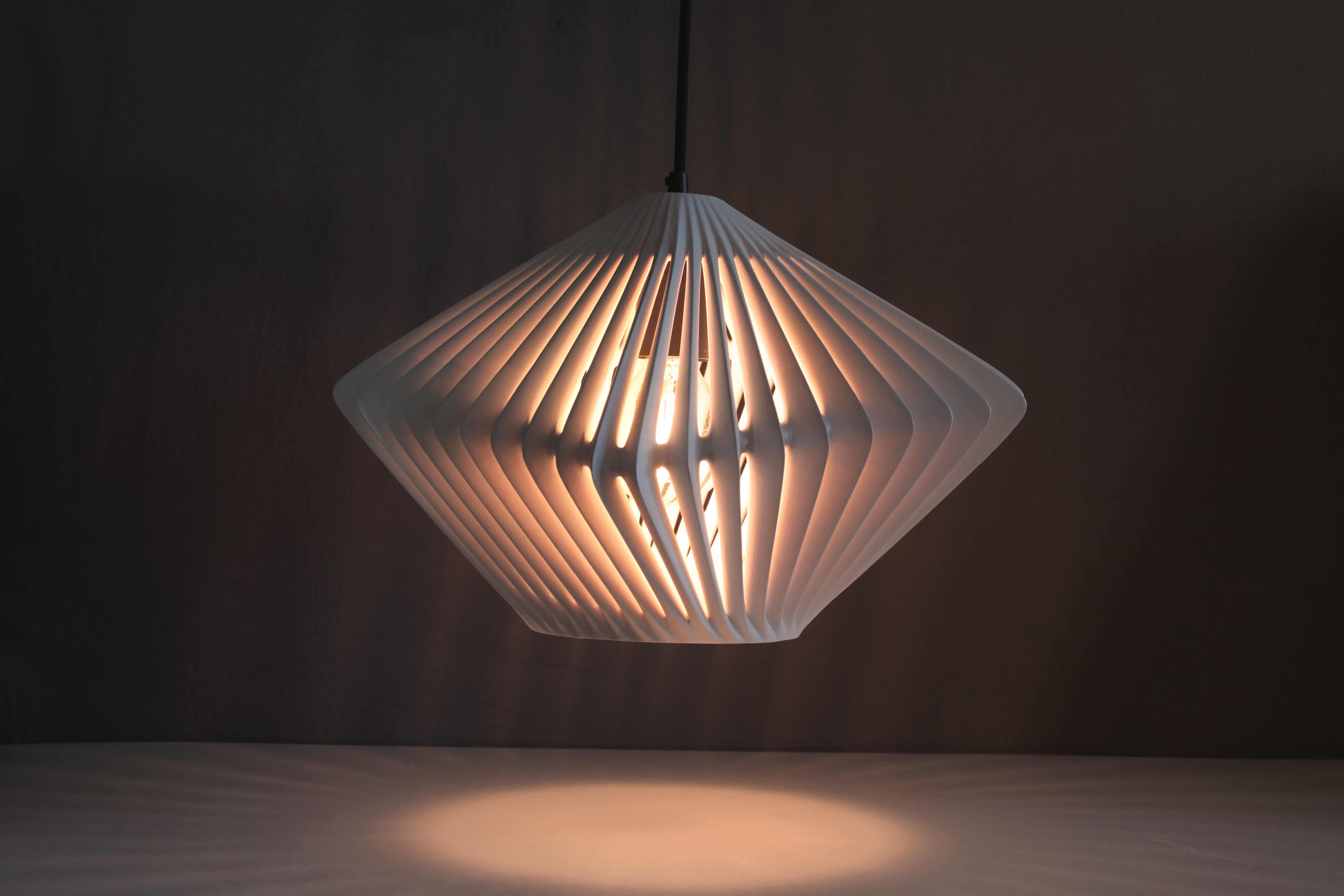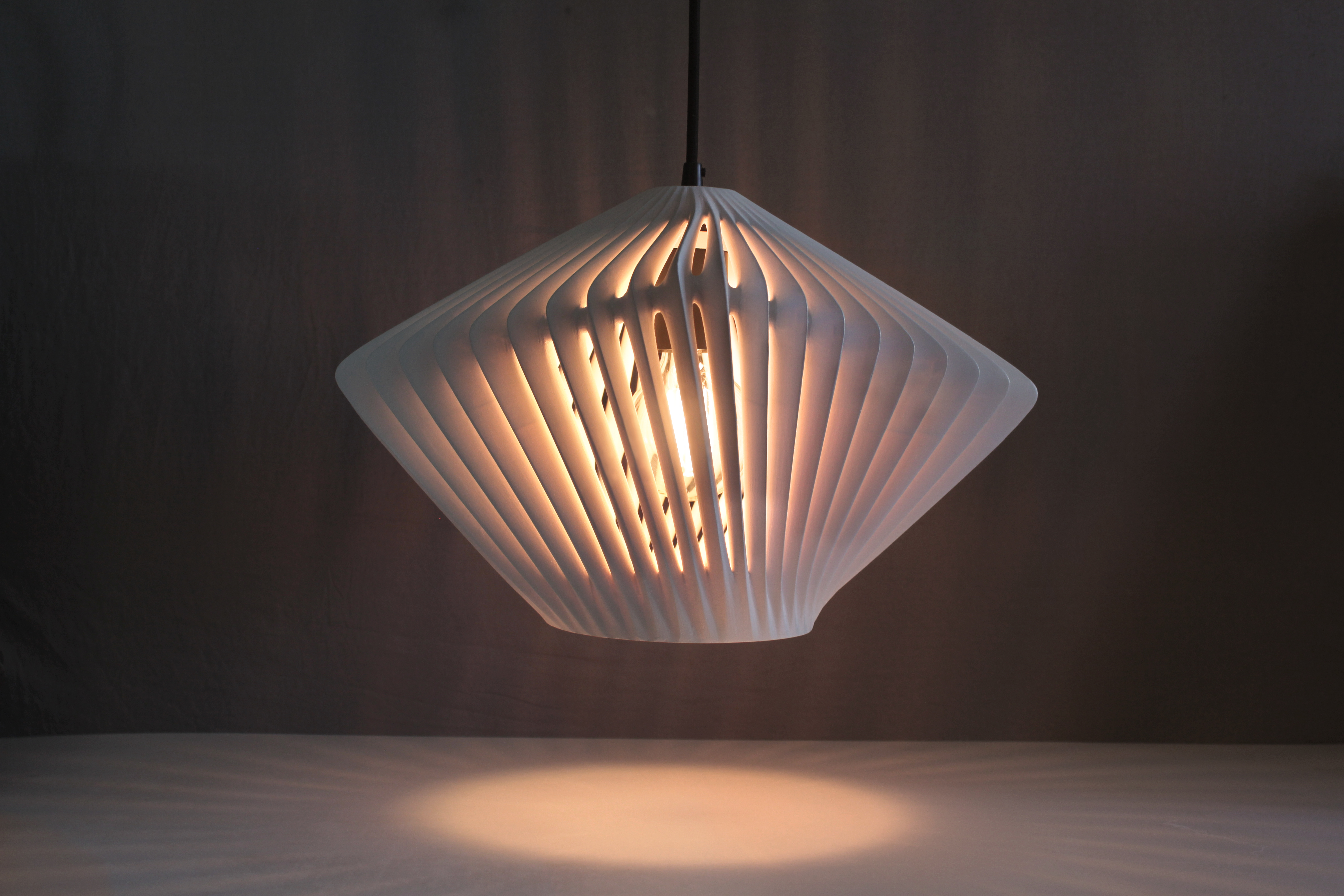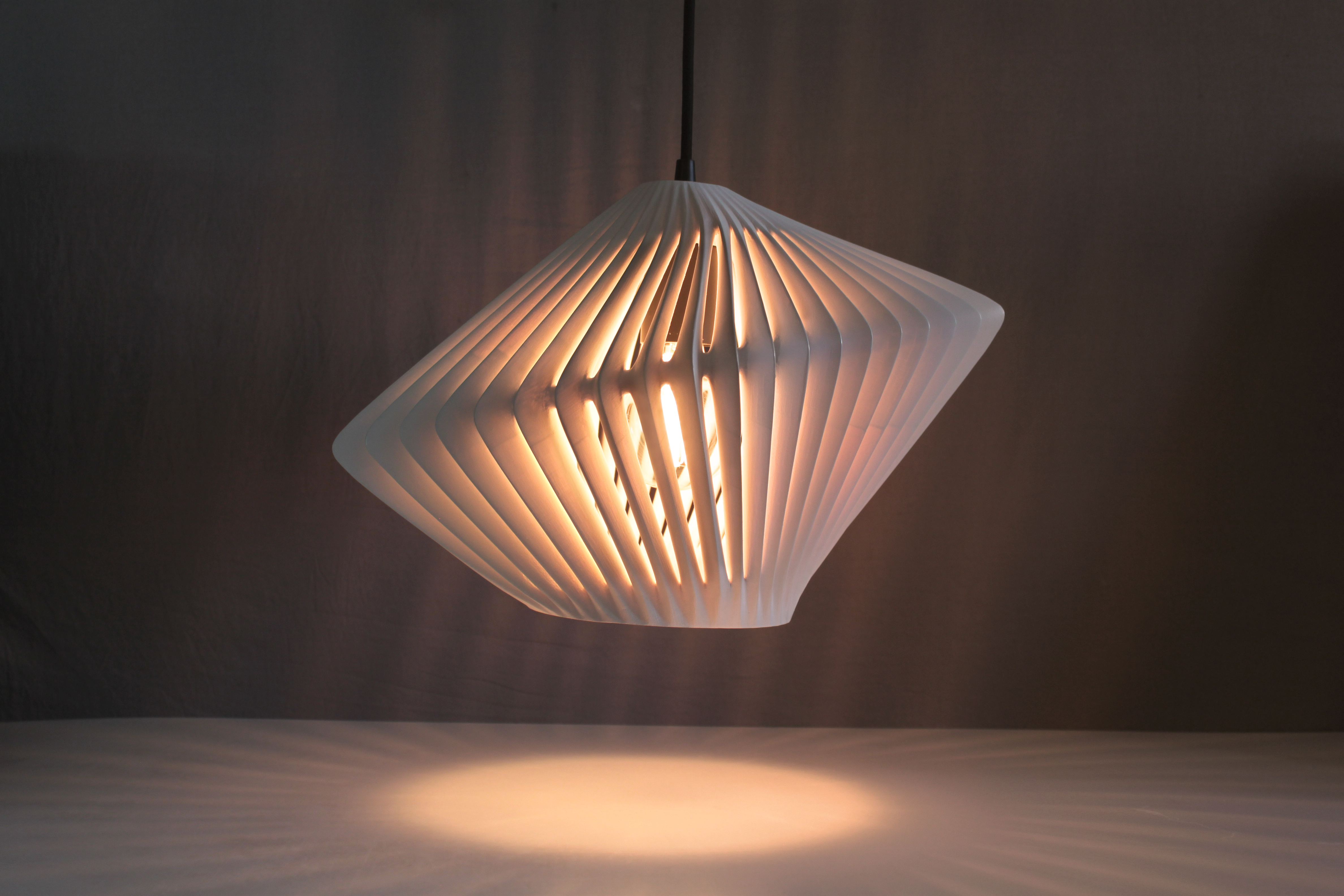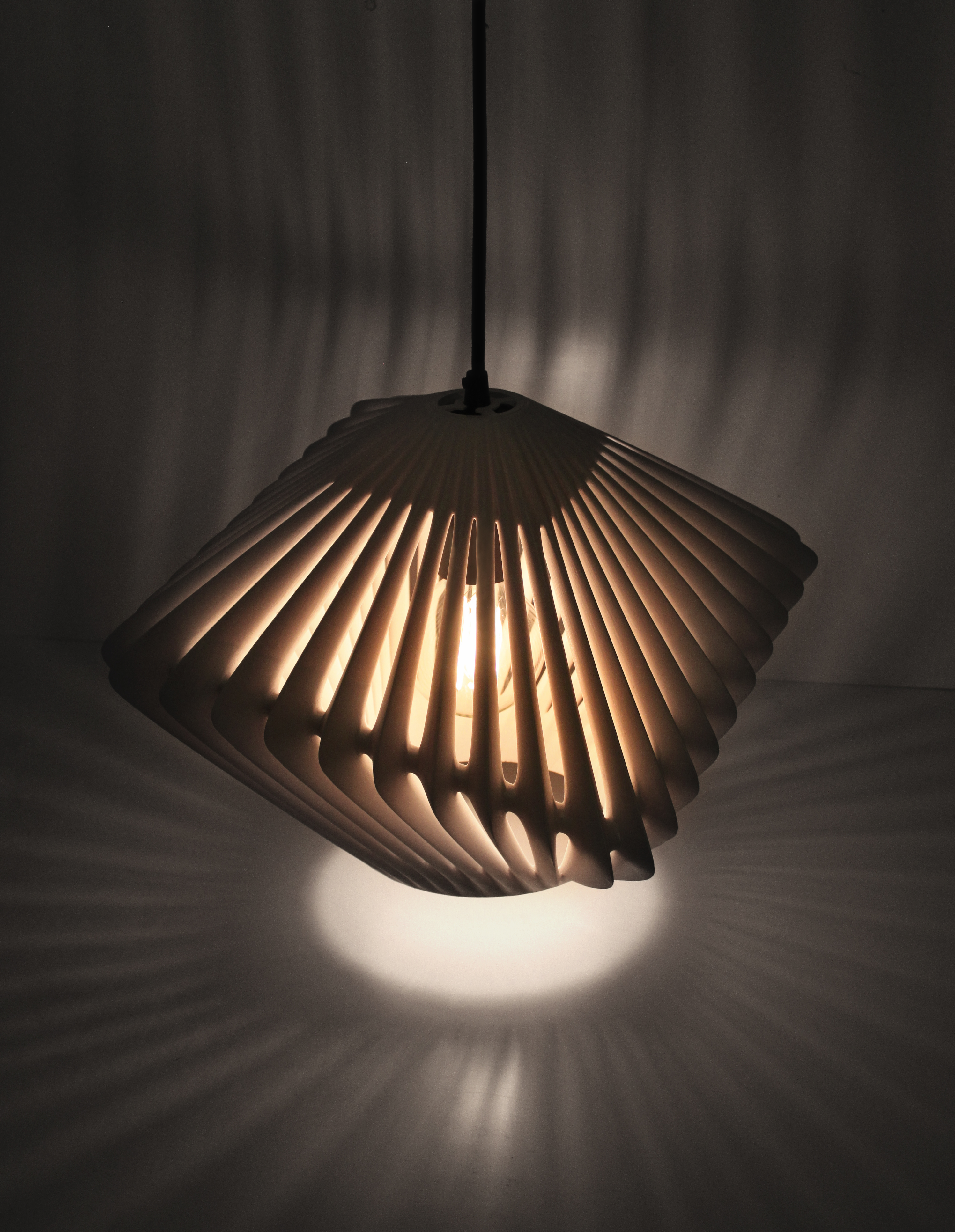






lightCAGE
Pendant / Ceiling Lamp
2nd Place: 2016 vModern Furniture Design Competition
Emerging from a desire to manipulate the uncontainable, immaterial properties of light, lightCAGE Pendant poses itself as a body in tension with the light that inhabits it. The quintessential conflicting duality of lamps, housing vs light, is reframed to form an object that is inherently defiant of the light source as the primordial element: it forces it to reside within its ribs, diffracting its rays as they escape. As the shadows of its geometry are casted over its surroundings, lightCAGE is able to augment its presence in space.
geometry
Beginning as a simple primary surface with a strong symmetrical character, lightCAGE was subtly sculpted to achieve a disruptive, yet delicate asymmetry along one axis to imbue it with a slight dynamism. With the goal of manipulating the light from within, the surface was then articulated and subdivided into an alternating pattern of ribs and slits along the sides of the shade. The ribs are then fused together by three transverse structural rings.
effect
lightCAGE distributes light in two ways: first, the bottom six-inch round aperture diffuses light evenly for focused downlighting and, second, the apertures along the sides disperse a lively ambient light. Once the light is turned on, the closely-spaced, narrow slits on the shade’s body diffract the beams of light as they pass through, forcing them to divide and combine with each other, thus creating a patterned array of light and shadows in surfaces within close proximity. Furthermore, the affair between symmetry and asymmetry makes it inherently perspectival: as a person moves around the space, its sequential apertures disclose varying vantage points of the bulb and the rib cage, altering the person’s perception of the shade.
fabrication
A working prototype was built using a desktop 3D printer in combination with a series of analog tools. The lamp was surgically split into smaller parts to accommodate for the printer bed while avoiding the use of supports. A total of 24 parts were printed in PLA, then bonded together, plastered, and sanded to achieve a seamless monocoque structure. The assembly was completed with a series of secondary components that hold the socket, lock the shade in place, and eases the pressure on the cord. The ability to prototype the lamp was an important part of the design, and it is a testament to the opportunity brought forth by 3D printing to customize the space we live in to reflect our very own sensibilities.
lighting facts
Wattage: 40W
Bulb Type: Globe Edison Bulb, Cage Filament
Color Temp: 2700K
Lumen Output: 160lm
Voltage: 120V
Dimming: 0-10V
Cord Length: 15’-0”

